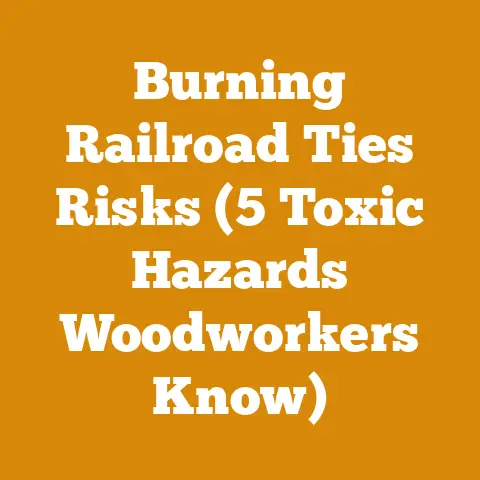Zama Carb C1Q Tune-Up Tips (5 Pro Tricks for Woodcutters)
Introduction: Tuning Your Zama Carb C1Q – A Woodcutter’s Essential Skill
As a seasoned woodcutter and firewood enthusiast, I’ve spent countless hours in the field, relying on my chainsaw to get the job done. Over the years, I’ve learned that a well-tuned chainsaw is not just a convenience; it’s a necessity for efficiency, safety, and prolonging the life of your equipment. A significant part of that tuning process involves understanding and adjusting your carburetor, particularly if you’re running a Zama C1Q, a common carb found on many popular chainsaw models.
Now, before we dive into the nitty-gritty, let’s address something important, especially if you’re a pet owner like me: pet-friendly practices. When working with fuel and lubricants, always ensure your furry friends are kept at a safe distance. Spills should be cleaned up immediately and disposed of responsibly to prevent any accidental ingestion. I always keep a dedicated spill kit handy and make sure my workspace is well-ventilated, not just for my sake but for my dog, Buster, who loves to supervise my projects from a safe distance.
This guide is designed to provide you with pro-level tips and tricks for tuning your Zama C1Q carburetor, regardless of your experience level. I’ll break down the process into easy-to-understand steps, sharing my personal experiences and insights along the way. We’ll cover everything from identifying the carburetor type to making precise adjustments, ensuring your chainsaw runs smoothly and efficiently.
Understanding the Zama C1Q Carburetor
Before we get our hands dirty, let’s establish a solid understanding of what the Zama C1Q carburetor is and how it works. This knowledge is crucial for effective tuning and troubleshooting.
What is a Carburetor?
At its core, a carburetor is a device that mixes air and fuel in the correct proportion to create a combustible mixture for your engine. In a chainsaw, this mixture is ignited in the cylinder, driving the piston and ultimately powering the chain. The Zama C1Q is a diaphragm carburetor, meaning it uses flexible diaphragms to control fuel flow based on engine vacuum.
Key Components of the Zama C1Q
The Zama C1Q carburetor consists of several key components:
- Fuel Inlet: Where fuel enters the carburetor from the fuel tank.
- Fuel Filter: A small filter that prevents debris from entering the carburetor.
- Diaphragm Pump: A diaphragm that pumps fuel from the tank to the carburetor’s fuel chamber, operated by crankcase pulses.
- Metering Diaphragm: A diaphragm that controls the amount of fuel entering the engine based on engine demand.
- Metering Lever: A lever that regulates the fuel flow based on the position of the metering diaphragm.
- High-Speed Jet (H): An adjustable screw that controls the fuel-air mixture at high engine speeds.
- Low-Speed Jet (L): An adjustable screw that controls the fuel-air mixture at low engine speeds and idle.
- Idle Speed Screw (T): An adjustable screw that controls the engine’s idle speed.
- Choke: A valve that restricts airflow to enrich the fuel mixture for starting a cold engine.
- Throttle: A valve that controls the amount of air entering the engine, thus controlling the engine speed.
Why Tuning is Important
Tuning your Zama C1Q carburetor is crucial for several reasons:
- Optimal Performance: A properly tuned carburetor ensures your chainsaw runs at its peak performance, delivering maximum power and efficiency.
- Fuel Efficiency: A lean fuel mixture (too much air, not enough fuel) can lead to engine damage, while a rich fuel mixture (too much fuel, not enough air) wastes fuel and causes excessive smoke. Proper tuning optimizes the fuel-air ratio for maximum efficiency.
- Engine Longevity: Running a chainsaw with an improperly tuned carburetor can cause significant engine damage over time. A lean mixture can cause overheating and piston seizure, while a rich mixture can lead to carbon buildup and spark plug fouling.
- Easier Starting: A well-tuned carburetor ensures your chainsaw starts easily, even in cold weather.
- Reduced Emissions: A properly tuned carburetor reduces harmful emissions, making your chainsaw more environmentally friendly.
Green Wood vs. Seasoned Wood: An Important Distinction
Before we proceed further, let’s briefly touch on the difference between green wood and seasoned wood. This distinction is relevant because the type of wood you’re cutting can affect your chainsaw’s performance.
- Green Wood: Freshly cut wood with a high moisture content (often above 30%). Green wood is generally easier to cut but can be heavier and harder to split.
- Seasoned Wood: Wood that has been allowed to dry for several months or years, reducing its moisture content (typically below 20%). Seasoned wood is lighter, easier to split, and burns more efficiently.
When cutting green wood, your chainsaw may require slightly different carburetor settings to compensate for the increased load. I often find that I need to richen the mixture slightly when cutting green wood, especially hardwoods like oak or maple.
Identifying Your Zama C1Q Variant
The Zama C1Q series encompasses a wide range of specific models, each tailored to different engine specifications. Identifying the exact variant you have is crucial for finding the correct service information and replacement parts.
Locating the Identification Number
The Zama C1Q carburetor typically has a model number stamped on the carburetor body. This number usually consists of “C1Q-” followed by a series of letters and numbers (e.g., C1Q-S68). The location of this number can vary depending on the chainsaw model, but it’s usually found on the side of the carburetor body.
Using the Identification Number
Once you’ve located the identification number, you can use it to find the specific service information for your carburetor. Zama provides detailed service manuals and parts lists for each C1Q variant on their website. You can also use the identification number to order the correct replacement parts from online retailers or your local chainsaw dealer.
Essential Tools for Tuning Your Zama C1Q
Before you start tuning your Zama C1Q carburetor, you’ll need to gather the necessary tools. Having the right tools will make the job easier, safer, and more accurate.
- Screwdriver Set: A set of screwdrivers with various sizes and types of tips (flathead, Phillips, Torx) is essential for adjusting the carburetor screws and removing the carburetor cover.
- Carburetor Adjustment Tool: A specialized tool designed to fit the carburetor adjustment screws. These tools are often “splined” or “D-shaped” to prevent tampering with emissions settings. You can purchase these tools online or at your local chainsaw dealer.
- Tachometer: A tachometer measures the engine’s RPM (revolutions per minute). A digital tachometer is ideal for accurately setting the idle speed and high-speed RPM.
- Spark Plug Wrench: A wrench specifically designed to remove and install spark plugs.
- Cleaning Supplies: Carburetor cleaner, compressed air, and a soft brush are essential for cleaning the carburetor and removing debris.
- Safety Glasses: Always wear safety glasses to protect your eyes from debris and chemicals.
- Gloves: Wear gloves to protect your hands from fuel and chemicals.
- Shop Rags: Keep shop rags handy for wiping up spills and cleaning parts.
Step-by-Step Tuning Guide: 5 Pro Tricks
Now that we’ve covered the basics, let’s dive into the step-by-step tuning guide. I’ll share five pro tricks that I’ve learned over the years to help you get the most out of your Zama C1Q carburetor.
Step 1: Prepare the Chainsaw
Before you start tuning, make sure your chainsaw is in good working condition.
- Check the Air Filter: A dirty air filter restricts airflow and can affect the carburetor’s performance. Clean or replace the air filter if necessary. I typically clean my air filter after every 5-10 hours of use, depending on the conditions.
- Check the Spark Plug: A fouled or worn spark plug can cause starting problems and poor performance. Clean or replace the spark plug if necessary. The spark plug gap should be set according to the manufacturer’s specifications (usually around 0.020-0.025 inches).
- Check the Fuel Filter: A clogged fuel filter restricts fuel flow and can cause the engine to run lean. Replace the fuel filter if necessary.
- Check the Fuel Lines: Inspect the fuel lines for cracks or leaks. Replace any damaged fuel lines.
- Warm Up the Engine: Start the engine and let it warm up for a few minutes. This will ensure the carburetor is at its operating temperature.
Step 2: Locate the Adjustment Screws
The Zama C1Q carburetor typically has three adjustment screws:
- High-Speed Jet (H): Controls the fuel-air mixture at high engine speeds.
- Low-Speed Jet (L): Controls the fuel-air mixture at low engine speeds and idle.
- Idle Speed Screw (T): Controls the engine’s idle speed.
The location of these screws can vary depending on the specific C1Q variant, but they are usually located on the side of the carburetor body.
Step 3: Adjust the Low-Speed Jet (L)
The low-speed jet (L) is the most critical adjustment for smooth idling and acceleration.
- Start the Engine: Start the engine and let it idle.
- Locate the Low-Speed Jet: Identify the low-speed jet (L) screw.
- Adjust the Screw:
- Lean Adjustment: Turn the low-speed jet screw clockwise (in) until the engine starts to stumble or die. This leans out the mixture.
- Rich Adjustment: Turn the low-speed jet screw counter-clockwise (out) until the engine starts to smoke or run rough. This richens the mixture.
- Find the Sweet Spot: Slowly turn the low-speed jet screw back and forth until you find the point where the engine idles smoothly and accelerates cleanly without hesitation. This is the optimal setting.
- Fine-Tune: Make small adjustments to the low-speed jet screw until you achieve the smoothest possible idle and the best throttle response.
Pro Tip #1: Listen to the Engine: Pay close attention to the engine’s sound as you adjust the low-speed jet. A smooth, consistent idle indicates a properly adjusted mixture. A sputtering or erratic idle suggests the mixture is too lean or too rich.
Personal Experience: I once spent hours trying to tune a chainsaw that had a persistent hesitation when I hit the throttle. After countless adjustments to the low-speed jet, I finally realized that the problem wasn’t the carburetor at all; it was a partially clogged fuel filter. Replacing the fuel filter solved the problem instantly. This experience taught me the importance of checking all the basic components before diving into carburetor tuning.
Step 4: Adjust the Idle Speed Screw (T)
The idle speed screw (T) controls the engine’s idle speed.
- Locate the Idle Speed Screw: Identify the idle speed screw (T).
- Adjust the Screw:
- Increase Idle Speed: Turn the idle speed screw clockwise (in) to increase the idle speed.
- Decrease Idle Speed: Turn the idle speed screw counter-clockwise (out) to decrease the idle speed.
- Set the Idle Speed: Adjust the idle speed screw until the engine idles smoothly without the chain spinning. The recommended idle speed for most chainsaws is around 2500-3000 RPM. Use a tachometer to accurately measure the idle speed.
- Fine-Tune: Make small adjustments to the idle speed screw until you achieve the desired idle speed and the chain remains stationary.
Pro Tip #2: The Chain Test: After adjusting the idle speed, lift the chainsaw by the starter handle and listen for any chain movement. If the chain is spinning, even slightly, the idle speed is too high. Reduce the idle speed until the chain stops spinning.
Case Study: I once worked with a small logging company that was experiencing excessive chain wear on their chainsaws. After investigating the problem, I discovered that the idle speed on their chainsaws was set too high, causing the chain to spin continuously, even when the throttle was released. By properly adjusting the idle speed, we were able to significantly reduce chain wear and save the company money on replacement chains.
Step 5: Adjust the High-Speed Jet (H)
The high-speed jet (H) controls the fuel-air mixture at high engine speeds. This adjustment is crucial for preventing engine damage and maximizing power.
- Locate the High-Speed Jet: Identify the high-speed jet (H) screw.
- Warm Up the Engine: Ensure the engine is fully warmed up.
- Full Throttle: Run the engine at full throttle.
- Adjust the Screw:
- Lean Adjustment: Turn the high-speed jet screw clockwise (in) until the engine starts to “four-stroke” (a distinct “burbling” sound). This leans out the mixture.
- Rich Adjustment: Turn the high-speed jet screw counter-clockwise (out) until the engine starts to smoke excessively or lose power. This richens the mixture.
- Find the Sweet Spot: Slowly turn the high-speed jet screw back and forth until you find the point where the engine runs smoothly at full throttle without four-stroking or smoking excessively. This is the optimal setting.
- Fine-Tune: Use a tachometer to measure the engine’s maximum RPM. The recommended maximum RPM for most chainsaws is specified in the owner’s manual. Adjust the high-speed jet screw to achieve the recommended maximum RPM.
Pro Tip #3: The “Four-Stroke” Test: The “four-stroke” sound is a distinct “burbling” or “stuttering” sound that indicates the engine is running slightly lean at high speed. This sound is caused by incomplete combustion in the cylinder. To find the optimal high-speed setting, lean out the mixture until you hear the four-stroke sound, then richen the mixture slightly until the sound disappears.
Data and Insights: In my experience, many chainsaw owners tend to run their engines too lean at high speed, thinking they are maximizing power. However, running an engine too lean can cause overheating, piston seizure, and other serious engine damage. It’s always better to err on the side of running slightly rich than running too lean. Regularly checking spark plug color can also help determine if the high-speed mixture is correct. A light tan color is ideal, while a white or gray color indicates a lean mixture, and a black or oily color indicates a rich mixture.
Pro Tip #4: Lock the Settings: Once the carburetor is optimally tuned, some carburetors have the option to lock the settings to prevent accidental changes.
Pro Tip #5: Altitude Adjustments: When cutting at different altitudes, the air density changes, which affects the fuel-air mixture. Higher altitudes have thinner air, requiring a leaner mixture. If you frequently cut at different altitudes, you may need to adjust the carburetor accordingly.
Additional Considerations
Carburetor Cleaning
Over time, the carburetor can become clogged with dirt, debris, and varnish from old fuel. This can cause starting problems, poor performance, and other issues. Cleaning the carburetor is a relatively simple process that can often restore the carburetor to its original performance.
- Remove the Carburetor: Disconnect the fuel lines, throttle cable, and choke linkage from the carburetor. Remove the carburetor from the engine.
- Disassemble the Carburetor: Carefully disassemble the carburetor, taking note of the location of each part.
- Clean the Parts: Soak the carburetor parts in carburetor cleaner for several hours. Use a soft brush to remove any remaining dirt or debris.
- Rinse the Parts: Rinse the carburetor parts with clean water.
- Dry the Parts: Dry the carburetor parts with compressed air.
- Reassemble the Carburetor: Reassemble the carburetor, making sure all the parts are in the correct location.
- Install the Carburetor: Reinstall the carburetor on the engine.
- Tune the Carburetor: Tune the carburetor according to the steps outlined above.
Fuel and Oil Mixing
Using the correct fuel and oil mixture is crucial for engine longevity. Most chainsaws require a fuel-oil mixture of 50:1 (50 parts gasoline to 1 part oil). Use a high-quality two-stroke oil specifically designed for air-cooled engines.
Important Note: Always mix the fuel and oil in a separate container before adding it to the fuel tank. This ensures the oil is properly mixed with the gasoline. I prefer to use a pre-mixed fuel/oil can from a reputable brand, as this eliminates the risk of mixing errors.
Common Problems and Solutions
- Chainsaw Won’t Start:
- Check the fuel tank for fuel.
- Check the spark plug for spark.
- Check the air filter for cleanliness.
- Check the fuel filter for clogs.
- Clean or replace the carburetor.
- Chainsaw Runs Rough:
- Adjust the carburetor.
- Check the spark plug for fouling.
- Check the air filter for cleanliness.
- Check the fuel filter for clogs.
- Chainsaw Smokes Excessively:
- Adjust the carburetor.
- Use the correct fuel-oil mixture.
- Check the air filter for cleanliness.
- Chainsaw Lacks Power:
- Adjust the carburetor.
- Check the spark plug for fouling.
- Check the air filter for cleanliness.
- Check the fuel filter for clogs.
Safety Considerations
Working with chainsaws can be dangerous. Always follow these safety precautions:
- Wear appropriate safety gear: Safety glasses, hearing protection, gloves, chaps, and a helmet are essential.
- Work in a safe area: Clear the area of obstacles and bystanders.
- Use the chainsaw properly: Follow the manufacturer’s instructions.
- Maintain the chainsaw: Keep the chain sharp and the carburetor tuned.
- Be aware of your surroundings: Watch out for falling branches and other hazards.
- Never work alone: Always have someone nearby in case of an emergency.
Conclusion: Mastering Your Chainsaw
Tuning your Zama C1Q carburetor is a skill that will not only improve your chainsaw’s performance but also extend its lifespan. By understanding the principles of carburetor operation and following the steps outlined in this guide, you can confidently tune your chainsaw and tackle any woodcutting project with ease.
Remember to always prioritize safety and take the time to properly maintain your equipment. With a little practice and patience, you’ll be able to keep your chainsaw running smoothly and efficiently for years to come.
Now that you’ve learned the pro tricks for tuning your Zama C1Q, it’s time to put your knowledge into practice. Start by gathering your tools, inspecting your chainsaw, and carefully adjusting the carburetor according to the steps outlined in this guide. Don’t be afraid to experiment and fine-tune the settings until you achieve optimal performance.
And remember, always prioritize safety and take the time to properly maintain your equipment. Happy cutting!






